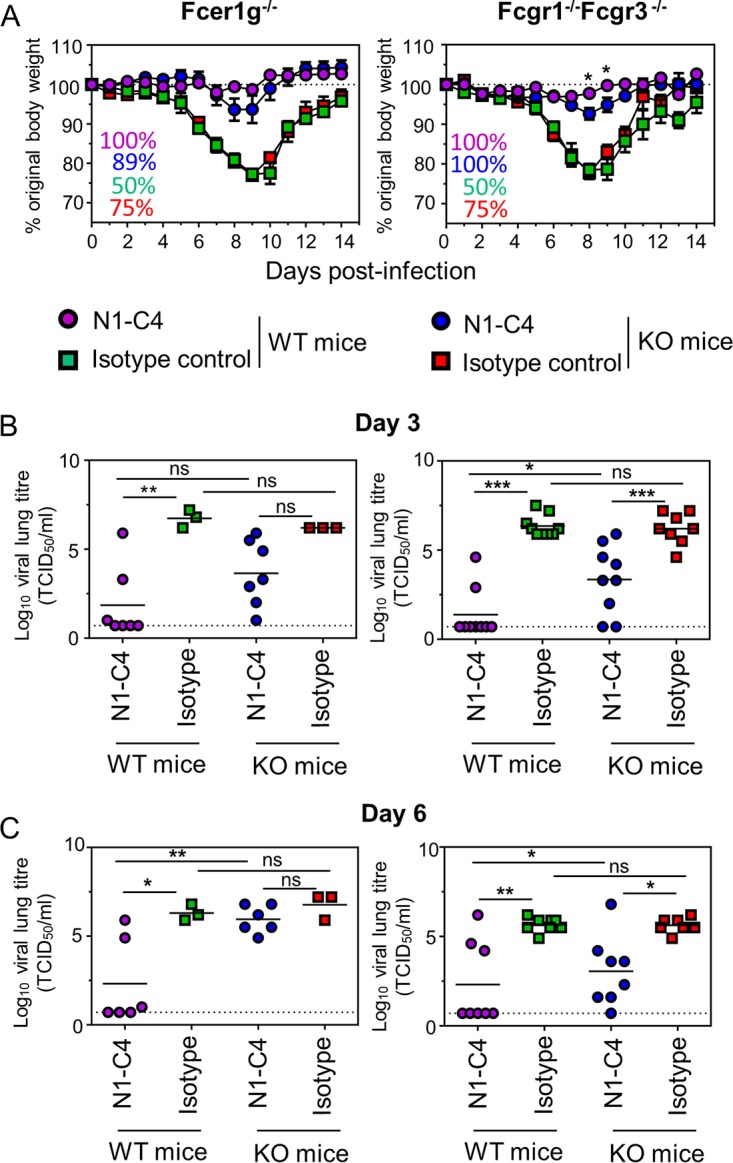FIG 3.

FcγRs aid in viral clearance but do not significantly impact weight loss in mice treated with N1-C4. Fcer1g or Fcgr1/Fcgr3 KO mice (white symbols) were treated with 1 mg/kg of N1-C4 (circles) or a mouse IgG1 isotype control (squares) via the intranasal route under isoflurane sedation. BALB/c WT mice were included as controls (black symbols). One day later, the mice were challenged with 1 LD50 of Bel/09 and monitored daily, and any mice that had lost ≥25% of their original body weight were euthanized. Survival percentages are indicated on the left-hand side of the graphs, where the text color matches colors indicated for each group in the legend. Weight loss data represent the mean percentages ± SEM of original body weight over time (n = 8 to 10 pooled from 2 independent experiments) (A). In a separate set of experiments, after passive transfer, KO or WT mice were challenged with 0.1 LD50 of Bel/09, and viral titers were assessed in lung homogenates on day 3 (B) or day 6 (C) by TCID50. The horizontal lines represent the mean. The dotted line indicates the detection limit of the TCID50. ns, nonsignificant. *, P < 0.05, **, P < 0.01, and ***, P < 0.001, by one-way ANOVA.
